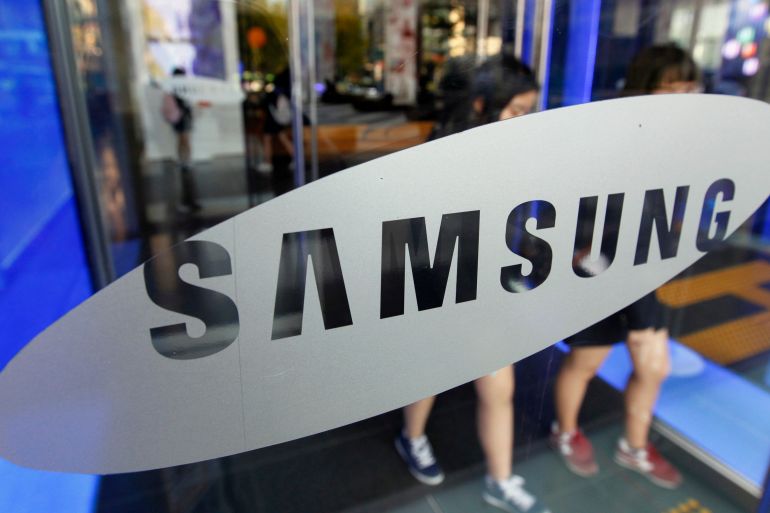Samsung’s profit plunges 95 percent on weak memory chip demand
South Korean tech giant’s second-quarter results mark firm’s worst quarterly profit since 2009.

Samsung Electronics has reported a more than 95 percent plunge in operating profits in the second quarter owing to weak demand for memory chips.
The firm is the flagship subsidiary of South Korean giant Samsung Group, by far the largest of the family-controlled conglomerates that dominate business in Asia’s fourth-largest economy.
Keep reading
list of 4 itemsTaiwan’s TSMC eyeing advanced chips base in Arizona, founder says
South Korea unveils tax breaks for domestic investments in chips
China bars operators from buying chips from US tech company
Operating profit from the April to June period was 668.5 billion won ($523.5m), down from 14.1 trillion won ($11bn) a year earlier, Samsung said in a statement on Thursday.
This marks the firm’s worst quarterly profit since the first quarter of 2009.
Samsung’s second-quarter net profit fell 84.5 percent to 1.72 trillion won ($1.35 trillion), and sales dropped 22.3 percent to 60 trillion won ($47 trillion).
The firm – one of the world’s largest makers of memory chips and smartphones – blamed weak demand but offered an optimistic outlook for the remainder of the year.
“Global demand is expected to gradually recover in the second half of the year, which should lead to an improvement in earnings driven by the component business,” it said, but added that “continued macroeconomic risks could prove to be a challenge”.
Samsung’s shares were trading 2.29 percent higher on Thursday afternoon.
South Korean chipmakers, led by Samsung, enjoyed record profits in recent years as prices for their products soared, but the global economic slowdown has dealt a blow to memory chip sales.
Demand swelled during the pandemic as consumers bought computers and smartphones during lockdowns, prompting chipmakers to ramp up production.
But demand quickly diminished as lockdowns lifted and weakened further in the face of soaring inflation and rising interest rates.
Joanne Chiao, an analyst at market research firm TrendForce, said output would decrease further — by an estimated 9.3 percent — this year owing to a weak overall economy.
“Consumer demand has weakened, leading to budget cuts by companies and ongoing order cancellations,” Chiao added.
TrendForce forecast price declines of DRAM chips — often used in PCs and smartphones — to slow in the second half of the year as chipmakers tighten supply after prices plunged as much as 18 percent in the second quarter.
In April, Samsung said it would make a “meaningful” cut in memory chip production, following the lead of rivals SK hynix and Micron.
The recent drop in profits has not deterred the firm from making bold investments.
In March, it unveiled plans to contribute $227bn over the next two decades to building the world’s largest chip centre in Yongin, south of Seoul.
‘Silver lining’
Samsung has also been grappling with a prolonged slump in the global smartphone market, which contracted by 11 percent in the second quarter from a year earlier, according to industry data provider Canalys.
“Mass market recovery was also delayed due to the continued economic downturn, affecting Q2 sales,” Samsung said in its Thursday statement.
The earnings results come a day after Samsung rolled out a new lineup of high-end foldable handsets — the Galaxy Z Fold 5 and Flip 5 — and the firm said it expected a return to normal growth in the remainder of the year, “especially in the premium market”.
More than one out of five smartphones sold during the second quarter globally were higher-end devices, said market analysis firm Counterpoint Research, adding that the premium segment was a “silver lining” for the industry.
Liz Lee, associate director at Counterpoint, said “the challenging atmosphere will reverse” in the second half of the year, led by growth in the premium market, “which offers higher profitability and resilience to economic downturns”.
Samsung’s new foldable phones were expected to “surpass traditional flagships in overall performance” and improve the company’s earnings momentum for the remainder of the year, Lee told the AFP news agency.
“Although the foldable smartphone market remains niche, it is an important segment with high growth potential for Samsung looking to maintain leadership in innovation and a premium market presence,” she added.